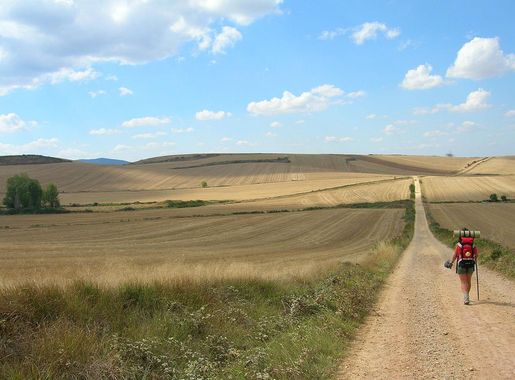
The Enchanting Pilgrimage: Camino de Santiago
Discover the rich history and natural beauty of the Camino de Santiago, a timeless pilgrimage route through the heart of Spain, blending culture, spirituality, and adventure.
The Camino de Santiago, also known as the Way of St. James, is an ancient pilgrimage route that stretches across the beautiful landscapes of Spain. This spiritual path has been walked by pilgrims for over a thousand years, leading to the sacred city of Santiago de Compostela, where the remains of St. James are believed to rest. The journey offers a unique blend of history, culture, and natural beauty, making it an unforgettable experience for travelers. The Camino de Santiago is not just a single path but a network of routes, each offering its own unique sights and experiences. The most popular route is the Camino Francés, which begins in the French Pyrenees and winds its way through the rolling hills and charming villages of northern Spain. Along the way, travelers can explore medieval churches, ancient monasteries, and picturesque towns, all while enjoying the warm hospitality of the local people. Walking the Camino is more than just a physical journey; it is a chance to connect with oneself and others. Pilgrims from all over the world come together on this path, sharing stories, meals, and moments of reflection. The sense of community and camaraderie is palpable, creating lasting memories and friendships. Whether you are seeking spiritual growth, cultural immersion, or simply a scenic adventure, the Camino de Santiago offers something for everyone.
Local tips in Camino de Santiago
- Pack light but include essentials like a good pair of walking shoes, a hat, and sunscreen.
- Learn basic Spanish phrases to communicate with locals and enhance your experience.
- Carry a pilgrim's passport (credencial) to collect stamps and gain access to albergues (pilgrim hostels).
- Start early in the morning to avoid the midday heat and have more time to explore.
- Stay hydrated and take regular breaks to rest your feet and enjoy the surroundings.
- Try local dishes along the way, such as pulpo a la gallega (Galician octopus) and pimientos de padrón (small green peppers).
- Respect the local customs and traditions, and always be courteous to fellow pilgrims and residents.
The Enchanting Pilgrimage: Camino de Santiago
The Camino de Santiago, also known as the Way of St. James, is an ancient pilgrimage route that stretches across the beautiful landscapes of Spain. This spiritual path has been walked by pilgrims for over a thousand years, leading to the sacred city of Santiago de Compostela, where the remains of St. James are believed to rest. The journey offers a unique blend of history, culture, and natural beauty, making it an unforgettable experience for travelers. The Camino de Santiago is not just a single path but a network of routes, each offering its own unique sights and experiences. The most popular route is the Camino Francés, which begins in the French Pyrenees and winds its way through the rolling hills and charming villages of northern Spain. Along the way, travelers can explore medieval churches, ancient monasteries, and picturesque towns, all while enjoying the warm hospitality of the local people. Walking the Camino is more than just a physical journey; it is a chance to connect with oneself and others. Pilgrims from all over the world come together on this path, sharing stories, meals, and moments of reflection. The sense of community and camaraderie is palpable, creating lasting memories and friendships. Whether you are seeking spiritual growth, cultural immersion, or simply a scenic adventure, the Camino de Santiago offers something for everyone.
When is the best time to go to Camino de Santiago?
Iconic landmarks you can’t miss
Cathedral of Santiago de Compostela
Explore the stunning architecture and spiritual legacy of the Cathedral of Santiago de Compostela, a UNESCO World Heritage Site and pilgrimage destination.

Parque da Alameda (Santiago de Compostela)
Discover the serene beauty of Parque da Alameda in Santiago de Compostela, where lush gardens and stunning cathedral views await every traveler.
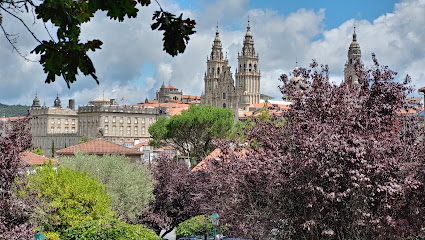
Parque de San Domingos de Bonaval
Explore the serene beauty and rich history of Parque de San Domingos de Bonaval in Santiago de Compostela, a perfect blend of nature and culture.

As Duas Marias
Explore As Duas Marias, a stunning sculpture in Parque de la Alameda, a cultural gem and essential stop in Santiago de Compostela for every traveler.

Porch of the Glory
Discover the breathtaking Porch of the Glory at Santiago de Compostela Cathedral, a masterpiece of Romanesque architecture and a spiritual gateway for pilgrims.
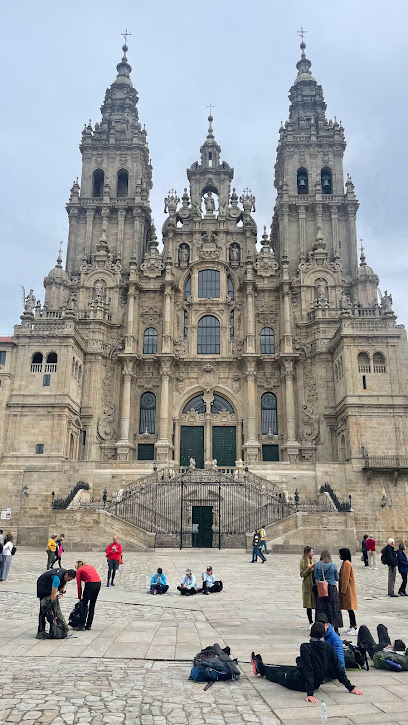
Cathedral Museum
Unveil the rich history and artistic treasures of Santiago de Compostela at the Cathedral Museum, a must-visit heritage site for all travelers.

Monte do Viso (Santiago de Compostela)
Discover the breathtaking views and rich natural beauty at Monte do Viso, a prime hiking destination in Santiago de Compostela, Galicia.
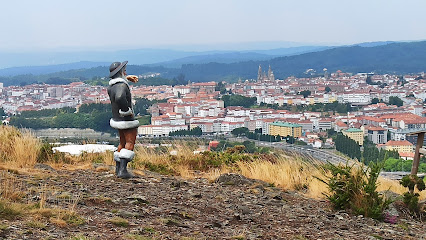
Museum of Pilgrimage
Discover the deep-rooted traditions and stories of pilgrimage at Santiago de Compostela's Museum of Pilgrimage, a cultural gem for travelers.

Fountain of Horses
Discover the enchanting Fountain of Horses in Santiago de Compostela, a historical landmark that blends artistry and culture, perfect for your travel adventure.
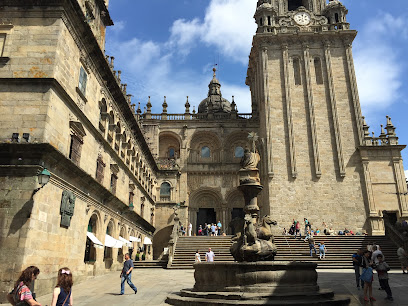
Camino De Finisterre
Experience the historic Camino De Finisterre, a spiritual journey along breathtaking landscapes from Santiago to the 'End of the World'.

Camino Santiago Family
Explore the transformative journey of the Camino de Santiago with Camino Santiago Family, where spiritual growth meets cultural heritage.

O Peregrino Escondido
Discover the tranquility of O Peregrino Escondido, a hidden gem near the Cathedral of Santiago de Compostela, steeped in history and charm.
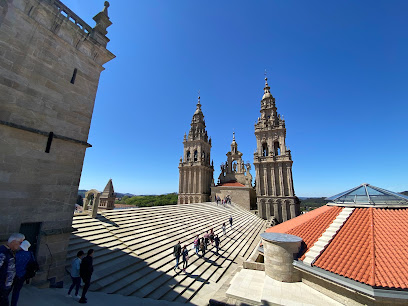
Crucero Camino de Santiago
Discover the Crucero Camino de Santiago, a stunning sculpture in Madrid that captures the spirit of the historic pilgrimage route in a serene and artistic setting.
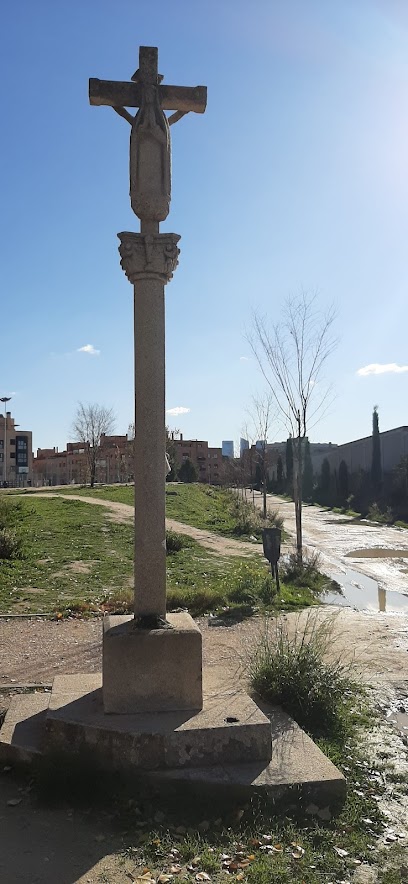
Camino de Santiago de Madrid (y Vía XXIV Romana)
Discover the breathtaking landscapes and rich history along the Camino de Santiago de Madrid, a pilgrimage route that enchants travelers from around the world.
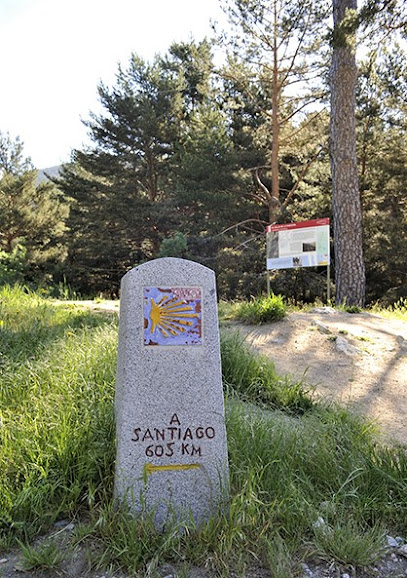
Placa del Camino De Santiago
Discover the historic charm of Placa del Camino De Santiago, a key landmark on the Camino de Santiago pilgrimage route in Oviedo, Asturias.
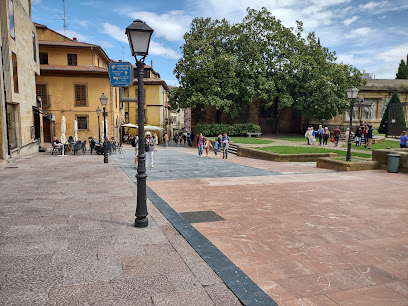
Unmissable attractions to see
Cathedral of Santiago de Compostela
Explore the rich history and stunning architecture of the Cathedral of Santiago de Compostela, a UNESCO World Heritage site and pilgrimage destination in Spain.
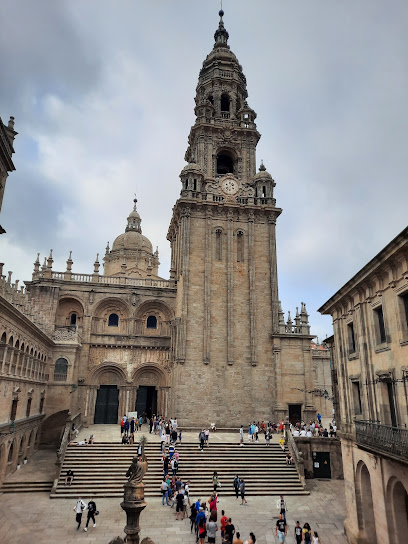
Parque Warner Madrid
Discover unparalleled fun and excitement at Parque Warner Madrid, the ultimate theme park experience in Spain, featuring thrilling rides and beloved characters.
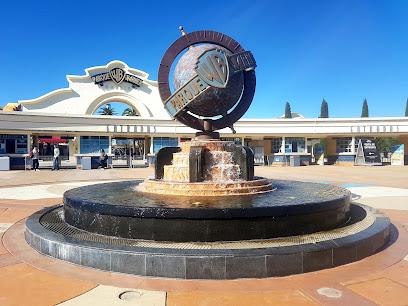
Parque da Alameda (Santiago de Compostela)
Explore the beauty and tranquility of Parque da Alameda, a stunning park in Santiago de Compostela offering breathtaking views and rich history for every traveler.

Saint Isidore Park
Explore the lush landscape and vibrant culture of Saint Isidore Park, a tranquil oasis in the heart of Madrid's Carabanchel district.

Praza de Galicia
Discover the serene beauty and historical significance of Praza de Galicia, a must-visit park in the heart of Santiago de Compostela.
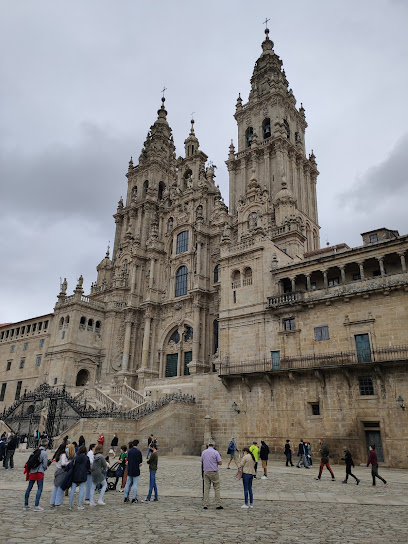
Sweet Space Museum
Explore the Sweet Space Museum in Madrid, a whimsical art museum where creativity and interactive fun come together for an unforgettable experience.

Parque Warner Beach
Experience the thrill of water slides and family fun at Parque Warner Beach, a top water park destination in Madrid perfect for all ages.
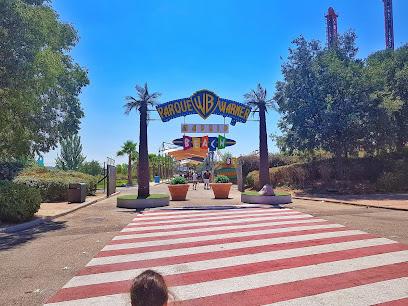
Praza da Quintana de Vivos
Discover the historical charm of Praza da Quintana de Vivos, a central landmark in Santiago de Compostela, perfect for relaxation and cultural immersion.
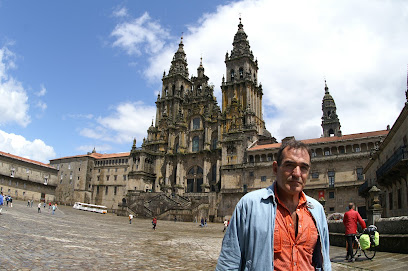
Velázquez Palace
Explore the Velázquez Palace, a cultural gem in Madrid's El Retiro Park, showcasing contemporary art amidst stunning natural surroundings.
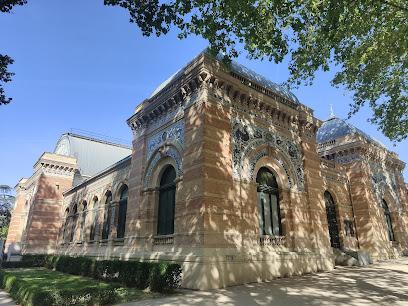
Shoko Madrid
Discover the dynamic nightlife at Shoko Madrid, a premier disco club offering music, dance, and unforgettable experiences in the heart of the city.

Moncloa's Lighthouse
Discover the breathtaking views and historical significance of Moncloa's Lighthouse, a must-visit scenic spot in the heart of Madrid.
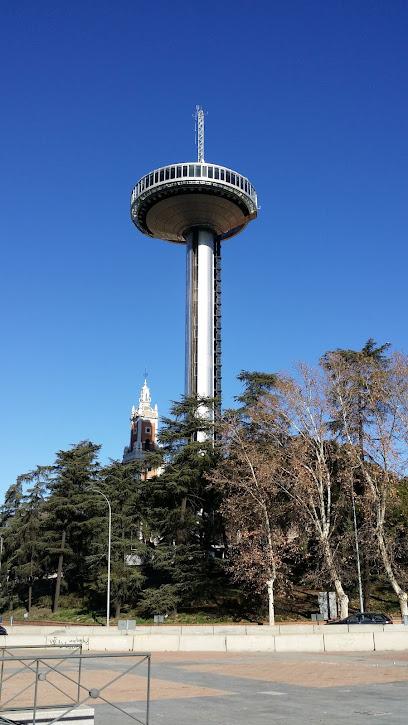
Riofrío Royal Palace
Explore the Riofrío Royal Palace: A stunning blend of Spanish history and natural beauty in the heart of Segovia.
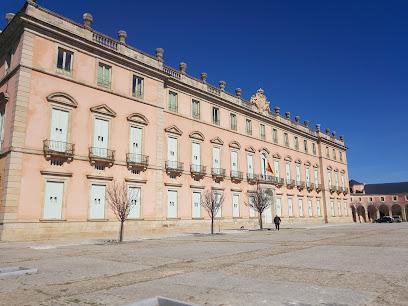
Frailes Garden
Explore the enchanting landscapes of Frailes Garden in San Lorenzo de El Escorial, where nature meets history in a serene and picturesque setting.
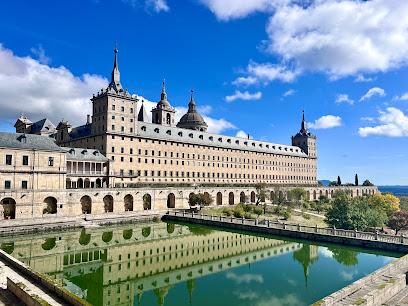
Nomad Museo Inmersivo
Experience the fusion of art and technology at Nomad Museo Inmersivo in the heart of Madrid, where creativity meets immersive exploration.

Fox in a Box Madrid Escape Room Madrid Centro
Experience the thrill of escape games at Fox in a Box Madrid, where teamwork and creativity unlock unforgettable adventures.
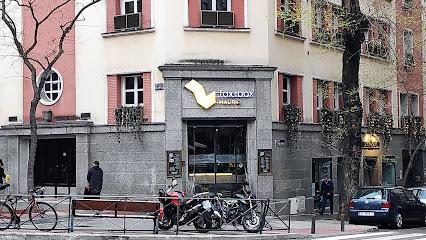
Essential places to dine
Casa Manolo
Experience authentic Galician cuisine at Casa Manolo in Santiago de Compostela—where tradition meets flavor in every bite.
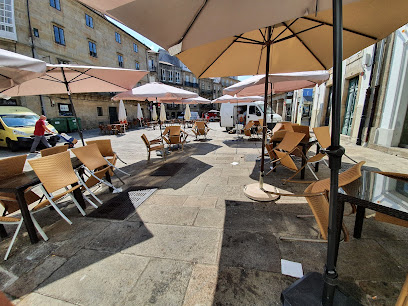
Mesón 42
Discover authentic Galician flavors at Mesón 42, a traditional restaurant in the heart of Santiago de Compostela offering delightful Spanish cuisine.
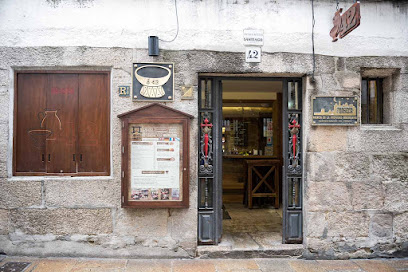
A Noiesa Casa de Comidas
Experience the authentic taste of Galicia at A Noiesa Casa de Comidas in Santiago de Compostela - a culinary delight not to be missed.
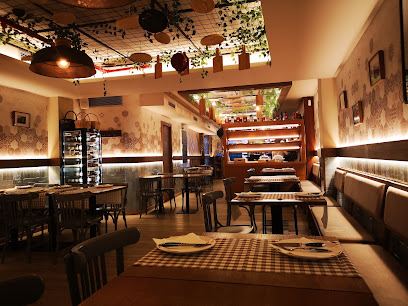
Casa de Xantar O Dezaseis (Santiago de Compostela)
Experience authentic Galician cuisine at Casa de Xantar O Dezaseis in Santiago de Compostela - where tradition meets taste.
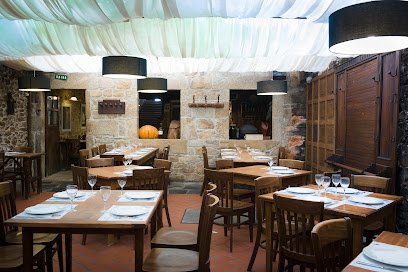
Tapas Petiscos Do Cardeal
Experience authentic Spanish cuisine at Tapas Petiscos Do Cardeal - a vibrant tapas bar in Santiago de Compostela offering delightful culinary adventures.
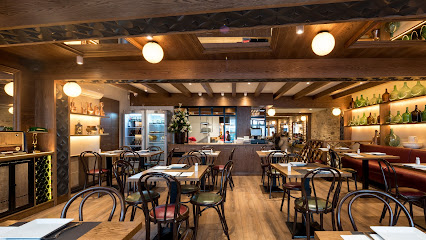
Restaurante María Castaña
Experience authentic Galician cuisine at Restaurante María Castaña in Santiago de Compostela – where tradition meets taste.
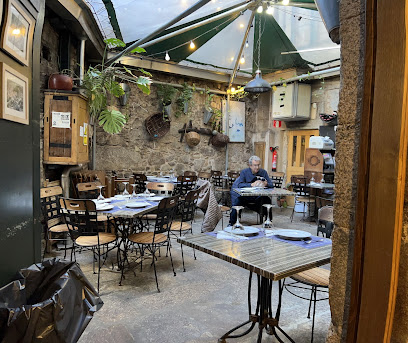
Restaurante O Piorno
Experience authentic Galician cuisine at Restaurante O Piorno in Santiago de Compostela - where tradition meets taste.

RESTAURANTE SAN CLEMENTE
Experience the best seafood and authentic tapas at Restaurante San Clemente in Santiago de Compostela – where tradition meets flavor.
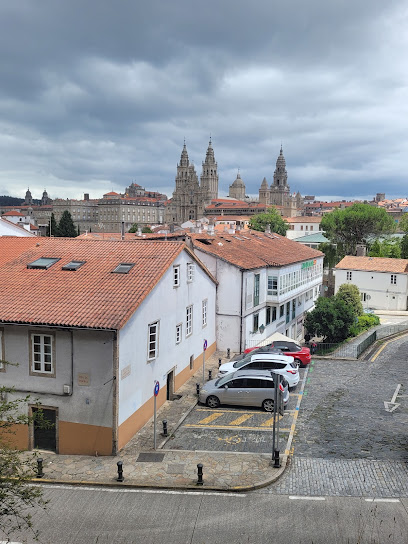
Casa Marcelo
Experience the fusion of Galician and Japanese cuisine at Casa Marcelo, where every dish is a celebration of flavor and artistry.
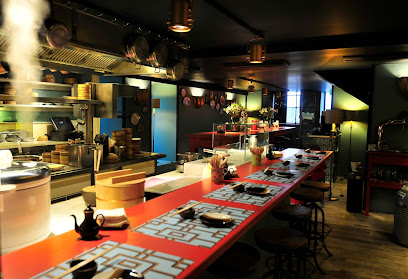
O Sendeiro
Experience authentic Galician cuisine at O Sendeiro in Santiago de Compostela – where every dish tells a story of tradition and flavor.
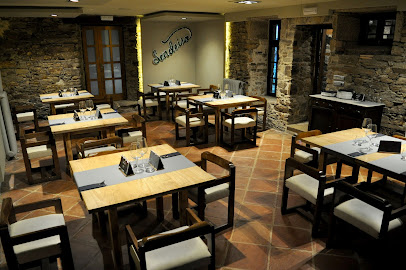
Restaurante A Moa
Experience authentic Galician cuisine at Restaurante A Moa in Santiago de Compostela—where tradition meets flavor in every dish.
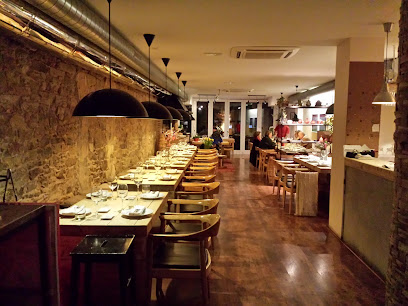
Restaurante Camino De Santiago
Discover authentic Galician cuisine at Restaurante Camino De Santiago in beautiful Peníscola - where fresh seafood meets delightful flavors.
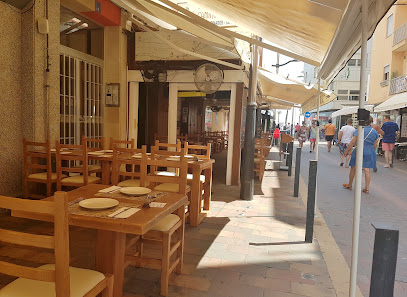
Restaurante A Maceta
Discover exquisite Mediterranean flavors at Restaurante A Maceta in Santiago de Compostela - where every meal is a celebration.

A Horta d'Obradoiro
Experience authentic Galician cuisine at A Horta d'Obradoiro in Santiago de Compostela – where tradition meets flavor in every dish.

Restaurante Marisquería A Barrola - Santiago de Compostela
Experience authentic Galician seafood at Restaurante Marisquería A Barrola in Santiago de Compostela - where tradition meets flavor.
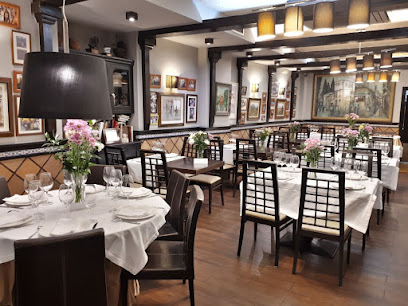
Markets, malls and hidden boutiques
Decathlon Santiago de Compostela
Explore Decathlon Santiago de Compostela for all your sporting goods needs, from bicycles to diving gear, perfect for adventurers in Galicia.

Área Central Shopping mall
Experience shopping, dining, and entertainment at Área Central Shopping Mall in Santiago de Compostela – the ultimate destination for tourists.
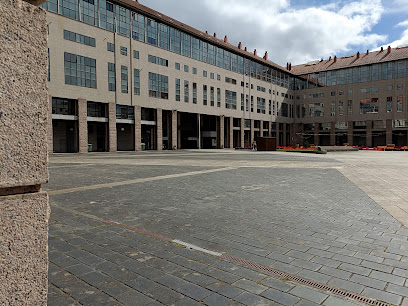
Decathlon City (Santiago de compostela)
Discover Decathlon City in Santiago de Compostela, the ultimate sporting goods store for all your outdoor and athletic needs.
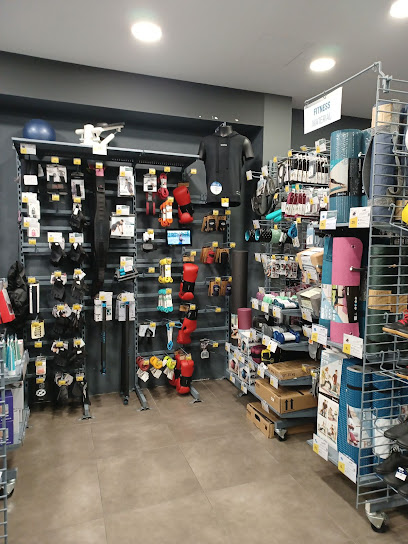
H&M
Explore H&M in Santiago de Compostela for the latest in affordable fashion and stylish accessories for the whole family.

Bo&Go Specialty Coffee (Santiago de Compostela)
Discover the art of coffee at Bo&Go Specialty Coffee in Santiago de Compostela, where flavor meets comfort in a charming café setting.
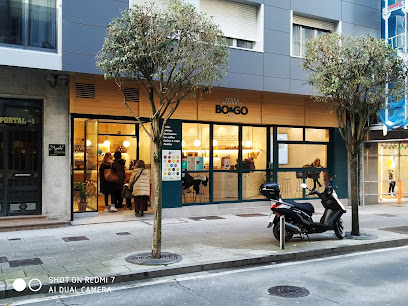
Kaméleon Vintage
Explore unique vintage fashion at Kaméleon Vintage in Santiago de Compostela, where each piece tells a story and embodies timeless style.
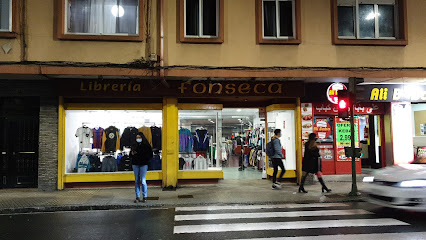
Xoiaría Regueira
Explore unique handcrafted jewelry and exquisite timepieces at Xoiaría Regueira in Santiago de Compostela, where local artistry meets elegance.
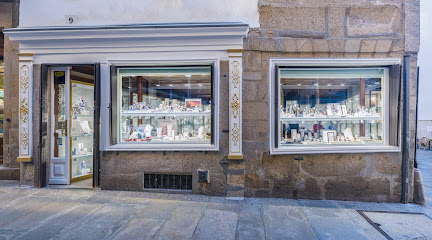
DEICHMANN
Explore DEICHMANN in Santiago de Compostela for fashionable and affordable footwear options perfect for travelers.
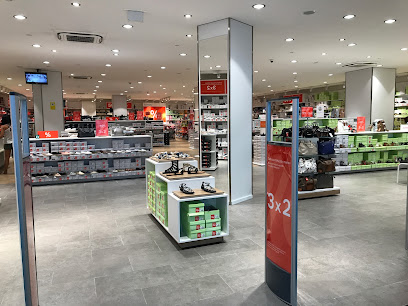
CASA Santiago As Cancelas
Discover CASA Santiago As Cancelas, your go-to destination for exquisite furniture, garden supplies, and unique gifts in Santiago de Compostela.
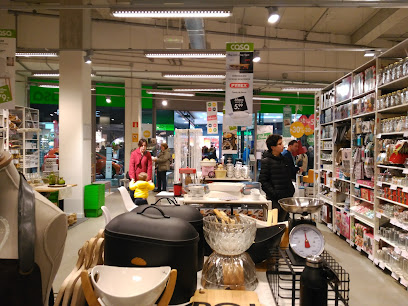
Liam cafe boutique
Discover the charm of Liam Cafe Boutique in Santiago de Compostela, where rich coffee, soothing teas, and local flavors create an inviting atmosphere.
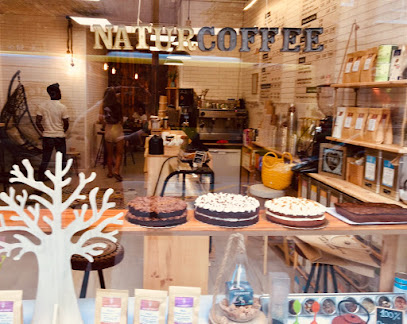
Produtos Casal Cotón
Explore the culinary treasures of Produtos Casal Cotón, a gourmet grocery store in Santiago de Compostela offering exquisite food, wines, and unique gifts.
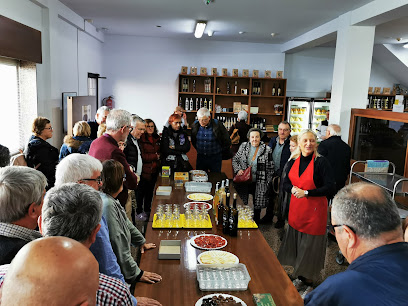
Sargadelos Galería Santiago
Experience the artistic legacy of Galicia at Sargadelos Galería Santiago, where fine chinaware meets contemporary art in a captivating setting.
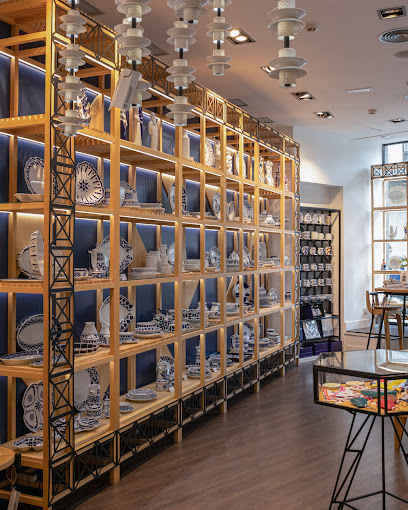
La Atlántica (Beer Shop)
Explore the finest selection of craft beers at La Atlántica, Santiago de Compostela's premier beer shop offering local and international brews.

Flamingos Vintage Kilo Santiago de Compostela
Uncover a world of retro fashion at Flamingos Vintage Kilo Santiago de Compostela, where every piece tells a story and sustainability meets style.
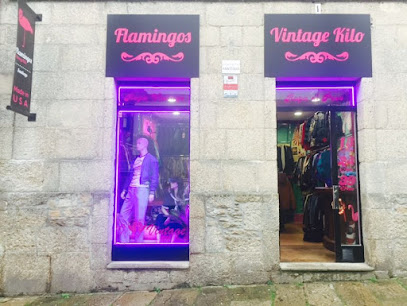
Elsavadeboda
Explore Elsavadeboda, Santiago de Compostela's elegant women’s clothing and accessories store, perfect for every fashionista’s wardrobe needs.
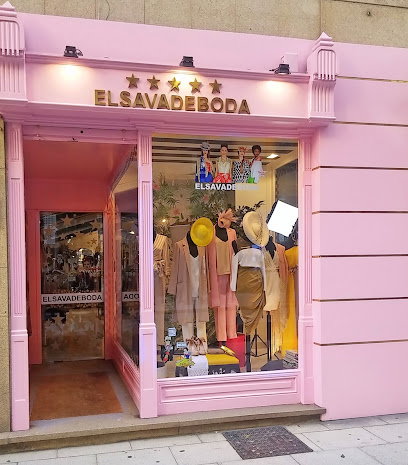
Essential bars & hidden hideouts
Pub Momo
Discover the lively spirit of Santiago de Compostela at Pub Momo, where cocktails and camaraderie create unforgettable nights.
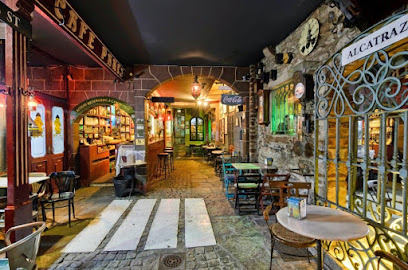
Pub Casa das Crechas (Santiago de Compostela)
Discover the lively atmosphere and rich flavors at Pub Casa das Crechas, a vibrant pub in Santiago de Compostela's heart, perfect for night owls.
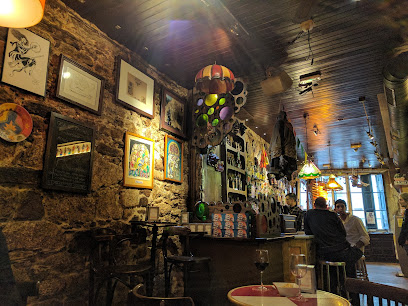
Pub Garoa (Santiago de Compostela)
Discover the lively charm of Pub Garoa, a top pub and cocktail bar in Santiago de Compostela, perfect for unwinding after a day of exploration.
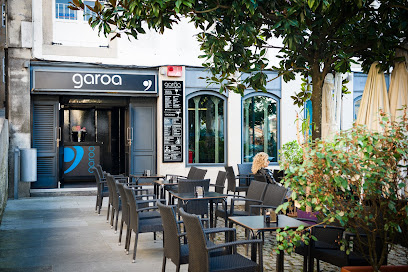
Bar A Novena Porta
Discover the lively spirit of Santiago de Compostela at Bar A Novena Porta, a vibrant sports bar offering delicious snacks and refreshing drinks.
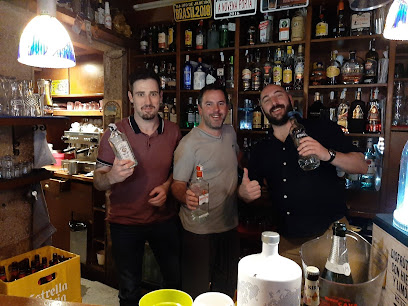
Pub Modus Vivendi (Santiago de Compostela)
Discover Pub Modus Vivendi: A perfect blend of local culture and vibrant nightlife in Santiago de Compostela.
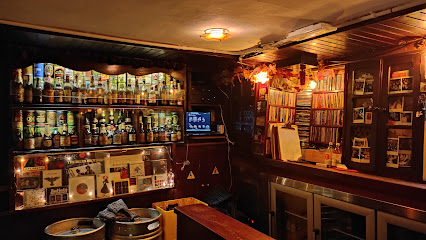
Pub Atlántico (Santiago de Compostela)
Discover the lively Pub Atlántico in Santiago de Compostela, a cocktail bar and rock music club perfect for nightlife enthusiasts.
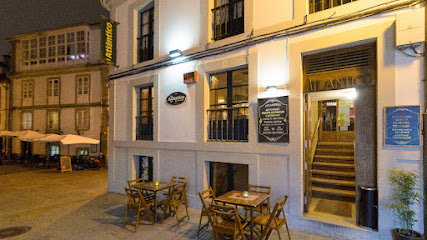
El patio
Experience authentic tapas in a cozy atmosphere at El Patio, a must-visit culinary destination in Santiago de Compostela.
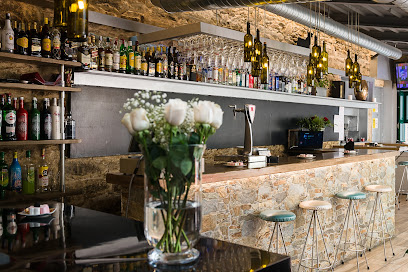
Fuco Lois (Santiago de Compostela)
Experience the vibrant atmosphere of Fuco Lois, a must-visit pub in Santiago de Compostela offering delightful drinks and traditional tapas.

Estudio 34 (Santiago de Compostela)
Discover Estudio 34, a lively bar in Santiago de Compostela known for its delicious tapas and welcoming atmosphere, perfect for unwinding after a day of adventure.
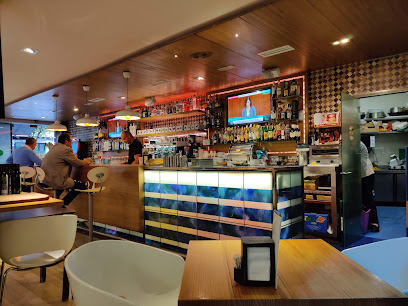
A Gramola
Discover the vibrant atmosphere of A Gramola in Santiago de Compostela, where local culture meets delicious drinks in a charming bar setting.
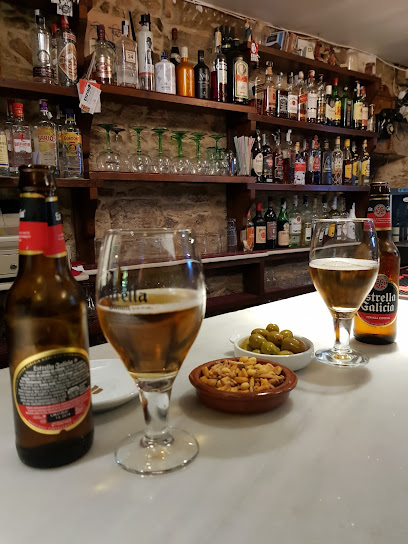
Avante Compostela Galiza Pub (Santiago de Compostela)
Experience the vibrant nightlife and rich Galician culture at Avante Compostela Galiza Pub in Santiago de Compostela.
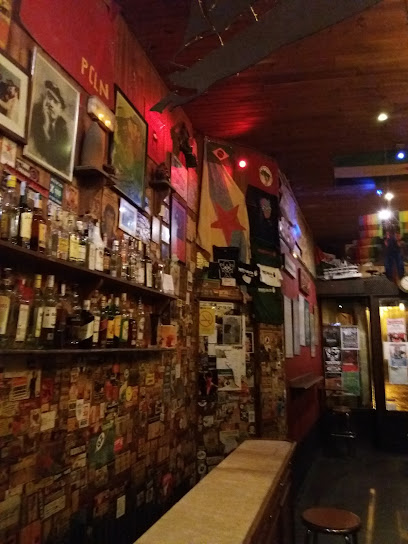
Borriquita de Belém
Experience the vibrant nightlife of Santiago de Compostela at Borriquita de Belém, a piano bar pub where live music and affordable drinks create unforgettable memories.
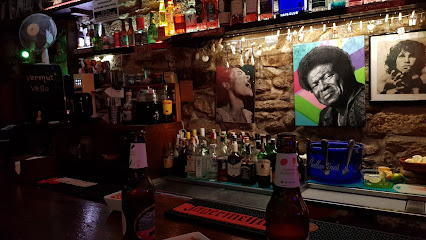
Café / Pub La Quintana
Experience the charm of Café / Pub La Quintana in Santiago de Compostela, where delightful drinks meet enchanting live piano music.

Pub Século IX
Discover the pulse of Santiago de Compostela nightlife at Pub Século IX, where great drinks and lively ambiance await!
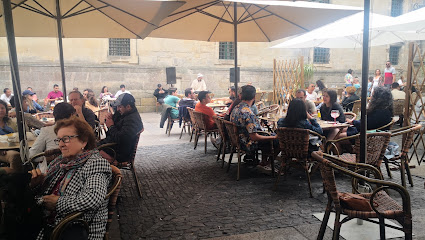
Café Bar Rey
Experience authentic Spanish tapas and vibrant culture at Café Bar Rey, a must-visit tapas bar in Santiago de Compostela.
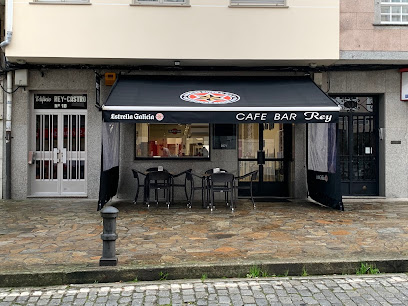
Local Phrases about Camino de Santiago
-
- HelloHola
[oh-la] - GoodbyeAdiós
[ah-dee-ohs] - YesSí
[see] - NoNo
[noh] - Please/You're welcomePor favor/De nada
[por fah-vor/deh nah-dah] - Thank youGracias
[grah-thyahs] - Excuse me/SorryPerdón/Lo siento
[pehr-dohn/loh syen-toh] - How are you?¿Cómo estás?
[koh-moh ehs-tahs] - Fine. And you?Bien. ¿Y tú?
[byen. ee too] - Do you speak English?¿Hablas inglés?
[ah-blahs een-glays] - I don't understandNo entiendo
[noh ehn-tyen-doh]
- HelloHola
-
- I'd like to see the menu, pleaseMe gustaría ver el menú, por favor
[meh goos-tah-ree-ah behr ehl meh-noo, por fah-vor] - I don't eat meatNo como carne
[noh koh-moh kahr-neh] - Cheers!¡Salud!
[sah-loohd] - I would like to pay, pleaseMe gustaría pagar, por favor
[meh goos-tah-ree-ah pah-gar, por fah-vor]
- I'd like to see the menu, pleaseMe gustaría ver el menú, por favor
-
- Help!¡Ayuda!
[ah-yoo-dah] - Go away!¡Vete!
[veh-teh] - Call the Police!¡Llama a la Policía!
[yah-mah ah lah poh-lee-thee-ah] - Call a doctor!¡Llama a un médico!
[yah-mah ah oon meh-dee-koh] - I'm lostEstoy perdido/a
[ehs-toy pehr-dee-doh/ah] - I'm illEstoy enfermo/a
[ehs-toy ehn-fehr-moh/ah]
- Help!¡Ayuda!
-
- I'd like to buy...Me gustaría comprar...
[meh goos-tah-ree-ah kohm-prar] - I'm just lookingSolo estoy mirando
[soh-loh ehs-toy meer-ahn-doh] - How much is it?¿Cuánto cuesta?
[kwan-toh kwehs-tah] - That's too expensiveEs demasiado caro
[ehs deh-mah-sya-doh kahr-oh] - Can you lower the price?¿Puedes bajar el precio?
[pweh-dehs bah-hahr ehl pree-syoh]
- I'd like to buy...Me gustaría comprar...
-
- What time is it?¿Qué hora es?
[keh oh-rah ehs] - It's one o'clockEs la una en punto
[ehs lah oo-nah ehn poon-toh] - Half past (10)Son las diez y media
[sohn lahs dyehs ee meh-dee-ah] - MorningMañana
[mah-nyah-nah] - AfternoonTarde
[tahr-deh] - EveningNoche
[noh-cheh] - YesterdayAyer
[ah-yehr] - TodayHoy
[oy] - TomorrowMañana
[mah-nyah-nah] - 1Uno
[oo-noh] - 2Dos
[dohs] - 3Tres
[trehs] - 4Cuatro
[kwah-troh] - 5Cinco
[theen-koh] - 6Seis
[says] - 7Siete
[syeh-teh] - 8Ocho
[oh-cho] - 9Nueve
[nweh-veh] - 10Diez
[dyehth]
- What time is it?¿Qué hora es?
-
- Where's a/the...?¿Dónde está...?
[dohn-deh ehs-tah] - What's the address?¿Cuál es la dirección?
[kwahl ehs lah dee-rehk-syon] - Can you show me (on the map)?¿Puedes mostrarme (en el mapa)?
[pweh-dehs mohs-trar-meh (ehn ehl mah-pah)] - When's the next (bus)?¿Cuándo es el próximo (autobús)?
[kwan-doh ehs ehl proh-ksee-moh (ow-toh-boos)] - A ticket (to ....)Un billete (para ....)
[oon bee-yeh-teh (pah-rah)]
- Where's a/the...?¿Dónde está...?
History of Camino de Santiago
-
The Camino de Santiago, also known as the Way of St. James, dates back to the early 9th century. It is believed that the remains of St. James the Great, one of Jesus' apostles, were discovered in the region of Galicia, Spain. The discovery led to the establishment of Santiago de Compostela as a major pilgrimage site. The route to Santiago became one of the most important Christian pilgrimages during the Middle Ages, alongside those to Rome and Jerusalem.
-
During the 12th and 13th centuries, the Camino de Santiago experienced significant growth. The Codex Calixtinus, a 12th-century manuscript, served as a guide for pilgrims and provided detailed descriptions of the route, its landmarks, and practical advice. The construction of infrastructure such as bridges, churches, and hospitals along the route facilitated the journey for pilgrims. The Camino became a cultural crossroads, fostering exchanges between people from different parts of Europe.
-
The pilgrimage's popularity declined in the 16th century due to several factors, including the Protestant Reformation, political instability, and the Black Death. Many of the routes fell into disrepair, and fewer pilgrims undertook the journey. The Camino de Santiago experienced a period of obscurity and neglect until the 20th century.
-
In the late 20th century, the Camino de Santiago saw a resurgence in popularity. Efforts to restore and promote the pilgrimage route were undertaken by various organizations and local governments. In 1987, the Camino was declared the first European Cultural Route by the Council of Europe. UNESCO also recognized the Camino as a World Heritage Site in 1993. The revival has led to a significant increase in the number of pilgrims and tourists walking the route each year.
-
The Camino de Santiago is not only a physical journey but also a spiritual and cultural experience. Pilgrims, known as 'peregrinos,' often carry a scallop shell, the symbol of St. James, and receive a 'compostela,' a certificate of completion, upon reaching Santiago de Compostela. The route is dotted with historical sites, including Romanesque churches, monasteries, and medieval towns. Festivals, such as the Feast of St. James on July 25th, celebrate the pilgrimage's rich heritage.
-
There are several routes to Santiago de Compostela, each with its own history and significance. The French Way (Camino Francés) is the most popular and historically significant, starting in Saint-Jean-Pied-de-Port in France. Other routes include the Northern Way (Camino del Norte), the Portuguese Way (Camino Portugués), and the English Way (Camino Inglés). Each route offers unique landscapes, cultural experiences, and historical landmarks.
Camino de Santiago Essentials
-
The Camino de Santiago can be accessed from multiple starting points across Europe, but the most popular route is the Camino Francés, which begins in Saint-Jean-Pied-de-Port, France. The nearest major airports are in Bilbao, Madrid, and Barcelona. From these cities, you can take a train or bus to Pamplona, and then a local bus to Saint-Jean-Pied-de-Port. Alternatively, Santiago de Compostela, the final destination of the Camino, has its own airport with connections to several European cities.
-
Once on the Camino, walking is the primary mode of transportation. However, there are other options available. Buses and trains connect many of the towns along the route, providing an alternative for those who might need a break from walking. Taxis are also available, and some services cater specifically to pilgrims, offering transport for people and their luggage.
-
Spain uses the Euro (€) as its currency. Credit and debit cards are widely accepted in urban areas and larger towns along the Camino, but it is advisable to carry some cash for smaller villages and rural areas where card facilities might not be available. ATMs are common in most towns, but it's wise to withdraw enough cash in larger towns to last until the next major stop.
-
The Camino de Santiago is generally very safe for travelers. However, standard precautions should still be taken. Keep an eye on your belongings, especially in crowded areas like major cities or popular tourist spots. While there are no specific high-crime areas targeting tourists along the Camino, it is always best to remain vigilant, especially in larger cities like Pamplona and Santiago de Compostela.
-
In case of emergency, dial 112, the general emergency number in Spain. Medical facilities are available in most towns along the Camino, and larger hospitals can be found in major cities like Pamplona and Santiago de Compostela. It is recommended to carry travel insurance that covers medical emergencies and to have a basic first aid kit with you during your journey.
-
Fashion: Do wear comfortable and appropriate clothing for walking long distances. Avoid flashy or revealing attire, especially when visiting religious sites. Religion: Do respect the religious significance of the Camino. Attend pilgrim masses and respect local customs. Public Transport: Do be considerate of other passengers. Offer your seat to elderly or disabled individuals. Greetings: Do greet locals with a friendly 'Hola' or 'Buen Camino' (Good Way). Eating & Drinking: Do try local cuisines and be open to sharing communal meals. Don't waste food or drink excessively, as it is considered disrespectful.
-
To experience the Camino like a local, consider starting your walk early in the morning to avoid the midday heat and to enjoy the tranquility of the path. Engage with fellow pilgrims and locals at albergues (hostels) and cafes along the way. Participate in local traditions, such as attending pilgrim masses and visiting historical sites. Don't miss the chance to try local specialties, such as Galician seafood in Santiago de Compostela and Navarra's famous wines.
Trending Landmarks in Camino de Santiago
-
Cathedral of Santiago de Compostela
-
Parque da Alameda (Santiago de Compostela)
-
Parque de San Domingos de Bonaval
-
As Duas Marias
-
Porch of the Glory
-
Cathedral Museum
-
Monte do Viso (Santiago de Compostela)
-
Museum of Pilgrimage
-
Fountain of Horses
-
Camino De Finisterre
-
Camino Santiago Family
-
O Peregrino Escondido
-
Crucero Camino de Santiago
-
Camino de Santiago de Madrid (y Vía XXIV Romana)
-
Placa del Camino De Santiago
Nearby Cities to Camino de Santiago
-
Things To Do in Segovia
-
Things To Do in Avila
-
Things To Do in Toledo
-
Things To Do in Valladolid
-
Things To Do in Salamanca
-
Things To Do in Burgos
-
Things To Do in Teruel
-
Things To Do in Zaragoza
-
Things To Do in Bragança
-
Things To Do in Pamplona
-
Things To Do in Bilbao
-
Things To Do in Valencia
-
Things To Do in Santander
-
Things To Do in Huesca
-
Things To Do in San Sebastián


